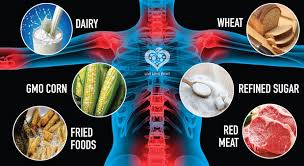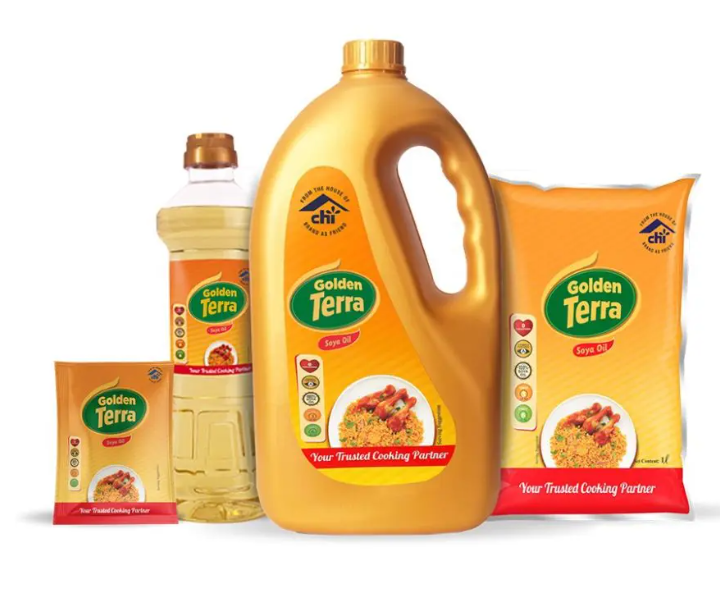Causes and Symptoms of Foodborne Illness.
Foodborne illness is caused by consuming contaminated foods or beverages. Many different disease-causing microbes or pathogens can contaminate foods, so there are many different types of foodborne illnesses.
Most foodborne diseases are infections caused by a variety of bacteria, viruses, and parasites. Other diseases are poisonings caused by harmful toxins or chemicals that have contaminated food.
Of note many foodborne pathogens also can be acquired through recreational or drinking water, from contact with animals or their environment, or through person-to-person spread.
SYMPTOMS OF FOODBORNE ILLNESS
•Common symptoms of foodborne illness are diarrhea and/or vomiting, typically lasting 1 to 7 days. Other symptoms might include abdominal cramps, nausea, fever, joint/back aches, and fatigue.
•What some people call the “stomach flu” may actually be a foodborne illness caused by a pathogen (i.e., virus, bacteria, or parasite) in contaminated food or drink.
•The incubation period (the time between exposure to the pathogen and onset of symptoms) can range from several hours to 1 week.
CAUSES OF FOODBORNE ILLNESSES
Commonly recognized foodborne infections are:
1)Campylobacteriosis (Campylobacter)
2)Cryptosporidiosis (Cryptosporidium)
3)Cyclosporiasis (Cyclospora spp.)
4)Escherichia coli O157:H7 Infection (E. coli O157)
and Hemolytic Uremic Syndrome (HUS)
5)Giardiasis (Giardia)
6)Listeriosis (Listeria monocytogenes)
7)Norovirus Infection (aka Norwalk virus, calicivirus, viral gastroenteritis)
8)Salmonellosis (Salmonella)
9)Scombroid Fish Poisoning
10)Shigellosis (Shigella)
11)Toxoplasmosis (Toxoplasma gondii)
12)Vibrio Infection (Vibrio parahaemolyticus)
13)Yersiniosis (Yersinia species)
FOODS ASSOCIATED WITH FOODBORNE ILLNESS
1)Raw foods of animal origin, that is, raw meat and poultry, raw eggs, unpasteurized milk, and raw shellfish are the most likely to be contaminated.
2)Fruits and vegetables can also be contaminated with animal waste when manure is used to fertilize produce in the field, or unclean water is used for washing the produce.
3)Raw sprouts are particularly concerning because the conditions under which they are sprouted are ideal for growing microbes.
4)Unpasteurized fruit juices or cider can also be contaminated if there are pathogens on the fruit that is used to make it.
5)Any food item that is touched by a person who is ill with vomiting or diarrhea, or who has recently had such an illness, can become contaminated. When these food items are not subsequently cooked (e.g., salads, cut fruit) they can pass the illness to other people.
Foodborne illness is caused by consuming contaminated foods or beverages. Many different disease-causing microbes or pathogens can contaminate foods, so there are many different types of foodborne illnesses.
Most foodborne diseases are infections caused by a variety of bacteria, viruses, and parasites. Other diseases are poisonings caused by harmful toxins or chemicals that have contaminated food.
Of note many foodborne pathogens also can be acquired through recreational or drinking water, from contact with animals or their environment, or through person-to-person spread.
SYMPTOMS OF FOODBORNE ILLNESS
•Common symptoms of foodborne illness are diarrhea and/or vomiting, typically lasting 1 to 7 days. Other symptoms might include abdominal cramps, nausea, fever, joint/back aches, and fatigue.
•What some people call the “stomach flu” may actually be a foodborne illness caused by a pathogen (i.e., virus, bacteria, or parasite) in contaminated food or drink.
•The incubation period (the time between exposure to the pathogen and onset of symptoms) can range from several hours to 1 week.
CAUSES OF FOODBORNE ILLNESSES
Commonly recognized foodborne infections are:
1)Campylobacteriosis (Campylobacter)
2)Cryptosporidiosis (Cryptosporidium)
3)Cyclosporiasis (Cyclospora spp.)
4)Escherichia coli O157:H7 Infection (E. coli O157)
and Hemolytic Uremic Syndrome (HUS)
5)Giardiasis (Giardia)
6)Listeriosis (Listeria monocytogenes)
7)Norovirus Infection (aka Norwalk virus, calicivirus, viral gastroenteritis)
8)Salmonellosis (Salmonella)
9)Scombroid Fish Poisoning
10)Shigellosis (Shigella)
11)Toxoplasmosis (Toxoplasma gondii)
12)Vibrio Infection (Vibrio parahaemolyticus)
13)Yersiniosis (Yersinia species)
FOODS ASSOCIATED WITH FOODBORNE ILLNESS
1)Raw foods of animal origin, that is, raw meat and poultry, raw eggs, unpasteurized milk, and raw shellfish are the most likely to be contaminated.
2)Fruits and vegetables can also be contaminated with animal waste when manure is used to fertilize produce in the field, or unclean water is used for washing the produce.
3)Raw sprouts are particularly concerning because the conditions under which they are sprouted are ideal for growing microbes.
4)Unpasteurized fruit juices or cider can also be contaminated if there are pathogens on the fruit that is used to make it.
5)Any food item that is touched by a person who is ill with vomiting or diarrhea, or who has recently had such an illness, can become contaminated. When these food items are not subsequently cooked (e.g., salads, cut fruit) they can pass the illness to other people.
Causes and Symptoms of Foodborne Illness.
Foodborne illness is caused by consuming contaminated foods or beverages. Many different disease-causing microbes or pathogens can contaminate foods, so there are many different types of foodborne illnesses.
Most foodborne diseases are infections caused by a variety of bacteria, viruses, and parasites. Other diseases are poisonings caused by harmful toxins or chemicals that have contaminated food.
Of note many foodborne pathogens also can be acquired through recreational or drinking water, from contact with animals or their environment, or through person-to-person spread.
SYMPTOMS OF FOODBORNE ILLNESS
•Common symptoms of foodborne illness are diarrhea and/or vomiting, typically lasting 1 to 7 days. Other symptoms might include abdominal cramps, nausea, fever, joint/back aches, and fatigue.
•What some people call the “stomach flu” may actually be a foodborne illness caused by a pathogen (i.e., virus, bacteria, or parasite) in contaminated food or drink.
•The incubation period (the time between exposure to the pathogen and onset of symptoms) can range from several hours to 1 week.
CAUSES OF FOODBORNE ILLNESSES
Commonly recognized foodborne infections are:
1)Campylobacteriosis (Campylobacter)
2)Cryptosporidiosis (Cryptosporidium)
3)Cyclosporiasis (Cyclospora spp.)
4)Escherichia coli O157:H7 Infection (E. coli O157)
and Hemolytic Uremic Syndrome (HUS)
5)Giardiasis (Giardia)
6)Listeriosis (Listeria monocytogenes)
7)Norovirus Infection (aka Norwalk virus, calicivirus, viral gastroenteritis)
8)Salmonellosis (Salmonella)
9)Scombroid Fish Poisoning
10)Shigellosis (Shigella)
11)Toxoplasmosis (Toxoplasma gondii)
12)Vibrio Infection (Vibrio parahaemolyticus)
13)Yersiniosis (Yersinia species)
FOODS ASSOCIATED WITH FOODBORNE ILLNESS
1)Raw foods of animal origin, that is, raw meat and poultry, raw eggs, unpasteurized milk, and raw shellfish are the most likely to be contaminated.
2)Fruits and vegetables can also be contaminated with animal waste when manure is used to fertilize produce in the field, or unclean water is used for washing the produce.
3)Raw sprouts are particularly concerning because the conditions under which they are sprouted are ideal for growing microbes.
4)Unpasteurized fruit juices or cider can also be contaminated if there are pathogens on the fruit that is used to make it.
5)Any food item that is touched by a person who is ill with vomiting or diarrhea, or who has recently had such an illness, can become contaminated. When these food items are not subsequently cooked (e.g., salads, cut fruit) they can pass the illness to other people.
0 Comments
0 Shares
0 Reviews






